No trip to Aachen, Germany, a short train trip from Cologne, is complete without a visit to the beautiful cathedral and the impressive treasury.
But, I was there to learn all I could about the history of the iconic Aachener Printen and to attempt to crack the recipe held closely by Aachen bakers who produce over 4500 pounds of Printen dough a year.
Baking of the traditional form of Printen began in the mid-1600s with the arrival of Belgians and their beautiful Couques de Dinant (Dinant Cookie or Cake). These thin, hard and very crisp cookies, similar in texture to Tirggel, were pressed into finely carved molds, yielding beautiful designs reminiscent of Dutch and Belgian Speculaas. Aachen bakers scrambled to recreate this treat. What resulted was a lovely, malleable dough sweetened with honey and raw sugar and scented with warm spices such as cinnamon, nutmeg, coriander and anise which could easily be pressed into carved molds still on display in several bakeries.
In 1806, Napoleon instituted the Continental System (or Blockage) which effectively cut off access by Aachen bakers to the imported raw sugar and honey essential in the production of Printen. German-produced beet sugar and sugar beet syrup were available and substituted. The resulting dough was thicker, coarser and difficult to imprint with detailed images. But the new formulation yielded a wonderful, deep fruity/raisin-like taste, making it quite distinct from gingerbread and Lebkuchen, despite the use of similar spices. Bakers began forming plain, rectangular cookies. The modern Aachener Printen was born and survives to this day. Large and small rectangles, many coated in chocolate or decorated with nuts and candied fruits can be found everywhere, along with whimsical cut-outs.
I stopped at, literally, every single bakery I could find to buy Printen. I wanted to taste as many varieties as possible and attempt to reproduce this unique delicacy at home. After hours of research and experimentation, and a bit of guidance from the tourism department, I came up with a recipe that now ranks as one of my favorite cookies. A printable version is at the bottom of the post. While the dough is best suited to be cut out, I wanted to carry on the imprinting tradition, recognising that the “modern” dough would not yield finely detailed impressions. The mold I chose to use was purchased from Springerle Joy and is a replica of one I spotted high up on a shelf in a bakery in Aachen!
I noticed this display of ingredients in a bakery and started from there.
Key ingredients include German brown rock sugar and German sugar beet syrup, both of which can easily be mail ordered in the U.S. Substitutions are discussed at the end of the post. I used potash dissolved in rum but baking soda can be used instead. Remaining ingredients include sugar, flour, candied orange peel, ground anise, cinnamon, coriander, cloves, cardamom and allspice. The last two spices can be omitted.
Finely crush the rock sugar. One method is to wrap it in a tea towel and whack it with a hammer or rolling pin. Pieces should be rather small so no one breaks their teeth but large enough to add a bit of crunch to each bite.
Dissolve potash in 1 tablespoon rum or water. (If using baking soda, do not dissolve it. Whisk it into the flour.)
Finely chop the sticky, candied orange peel.
Warm the sugar beet syrup and water in a saucepan. Remove from heat.
Pour into a large mixing bowl. Add the spices, granulated sugar and candied orange peel. Mix thoroughly. Add the dissolved potash and blend everything.
Stir in the flour and crushed rock sugar.
Mix until combined. If the mixer is straining, dump the dough out onto a flour-dusted counter and knead in the remaining flour. The dough should be firm and not too sticky. It should feel rather like a stiff gingerbread dough.
Cut into two pieces and pat out into 1 inch-thick discs.
Wrap tightly in plastic wrap. Seal in a plastic ZipLoc bag and store in a cool place (not the refrigerator) for 1 to 2 days, or up to 4 days.
Dust the counter generously with flour. Unwrap the dough. If it is very soft and sticky, knead in some of the flour.
If using a cookie cutter or forming rectangles of any size, roll the dough to 1/4 inch or 5 mm thick.
If using a cookie mold, dust the mold with flour, roll dough to appropriate thickness (no thinner than 1/4 inch or 5 mm thick) and press into the mold.
Turn everything over and whack the back of the mold with a rolling pin (not hard enough to break it) to ensure an impression is made into the thick dough. (Note: deep molds without delicate images work best.)
Gently lift the mold. Peek under halfway through lifting to see if the entire impression took. If not, replace and press where needed. If the mold is fully removed, it is nearly impossible to line everything up again.
Cut out the impressed dough.
Gently transfer to a lightly-greased cookie sheet. Carefully brush off any excess flour. Some left will not matter. Place in a preheated 350°F/180°C oven. Bake 8 minutes then turn the pan around. Bake about 5 to 7 more minutes. Remove when bottoms are browned, tops are lightly browned and the Printen is still a bit soft. Baking too long results in rock-hard cookies. Bake one test cookie to be sure the dough is firm enough. If it spreads or the image does not hold, knead a bit more flour into the dough. The dough should not be sticky.
Blend sugar beet syrup and water until it reaches a very watery consistency, about a 1:1 ratio. Immediately upon removing the Printen from the oven, brush the glaze over the tops and sides. Do not let the glaze pool.
Printen will remain sticky if the coating is not diluted with enough water. Remove hot, glazed cookies to a cooling rack. Allow to cool completely. When the glaze is no longer sticky, store in an airtight container. Printen may also be frozen.
A view of the mold, the heavily-floured impressed dough before brushing excess flour away and the baked, glazed Printen is below.
Glazed, cooled and ready to be stored to let flavors mellow. Or eat right away!
I also made a a batch using my Max and Moritz mold.
And some cut-outs. If adding nuts, press them into the dough before baking.
A note on substitutions for sugar beet syrup: While honey, molasses, dark corn syrup and cane syrup are close in consistency, the resulting dough tastes more like gingerbread. As noted above, the German sugar beet syrup lends a luscious, raisiny taste. The closest substitute I found was a grape molasses at my local middle eastern shop. Petimezi, a Greek grape molasses, may also be used. Many grape molasses are less viscous so may require adding a bit more flour to the dough.
- 10 fluid ounces / 14 to 15 oz. by weight / 500 grams sugar beet syrup (Zuckerrüben Sirup)
- 3 tablespoons / 45 ml water
- 2¾ teaspoons / 10 grams potash (Pottasch)
- (Substitute 1½ teaspoons baking soda if potash is not available
- 1 tablespoon / 15 ml rum or water
- ¾ cup / 150 grams / 5¼ oz. brown rock sugar chunks (Krümel Kandis), crushed
- ½ cup / 100 grams / 3 ½ oz. granulated sugar
- ⅓ cup / 60 grams / 2 oz. candied orange peel, finely chopped
- 2 teaspoons cinnamon
- 2 teaspoons coriander
- ¼ teaspoon allspice
- ¼ teaspoon cardamom
- ⅛ teaspoon cloves
- 2 teaspoons anise seed, finely ground
- 3¾ / 600 grams / 21 oz. flour (plus more for firming dough and rolling)
- For coating: sugar beet syrup mixed with an equal amount (or more) water
- Finely crush the rock sugar. One method is to wrap it in a tea towel and whack it with a hammer or rolling pin.
- If using potash, dissolve it in rum or 1 tablespoon water. (If using baking soda, do not dissolve in the rum. Each will be added separately to the batter. Rather, whisk the soda into the flour.)
- Warm the sugar beet syrup and 3 tablespoons water is a saucepan. Remove from heat. Pour into a large mixing bowl.
- Add the spices, sugars and orange peel. Mix thoroughly.
- Add the diluted potash and blend everything.
- Add the flour in two or three parts.
- The dough is heavy so mix by hand if not using a heavy-duty mixer.
- Dump onto the counter and knead until all of the flour is incorporated.
- Cut into two pieces and pat out into 1 inch-thick discs.
- Wrap tightly in plastic wrap. Seal in a plastic ZipLoc bag and store in a cool place (not the refrigerator) for 1 to 2 days, or up to 4 days.
- Preheat oven to 350°F/180°C.
- Lightly grease cookie sheets.
- Dust counter generously with flour. Unwrap the dough. If it is very soft and sticky, knead in some of the flour.
- If using a cookie cutter or forming rectangles of any size, roll the dough to ¼ inch or 5 mm thick.
- If using a cookie mold, dust the mold with flour, roll dough to appropriate thickness (no thinner that thickness for cutters) and press into the mold. Whack the back of the mold with a rolling pin to insure an impression is made into the thick dough. (Note: deep molds without delicate images work best.)
- Bake one test cookie to be sure the dough is firm enough. If it spreads or the image does not hold, knead a bit more flour into the dough. The dough should not be sticky. It should feel rather like a stiff gingerbread dough.
- Bake 8 minutes then turn the pan around. Bake about 5 to 7 more minutes.
- Remove when bottoms are browned, tops are lightly browned and the Printen is still a bit soft. Baking too long results in rock-hard cookies.
- Blend syrup and water until it reaches a very watery consistency.
- Immediately upon removing the Printen from the oven, brush the glaze over the tops and sides. Do not let the glaze pool. Printen will remain sticky if the coating was not diluted with enough water.
- Remove from the cookie sheet to cooling racks. Cool thoroughly.
- Once cool and no longer sticky, store in an airtight container.
- SUBSTITUTIONS FOR SUGAR BEET SYRUP:
- Middle Eastern or Greek grape molasses may be substituted. It tends to be thinner than the sugar beet syrup so more flour may need to be added. Honey, molasses, cane syrup or dark corn syrup should not be used as it will change the taste to that of gingerbread.










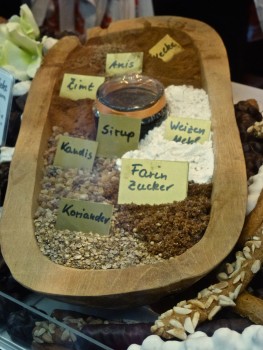
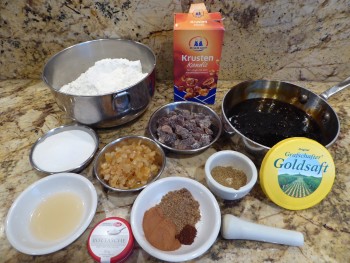
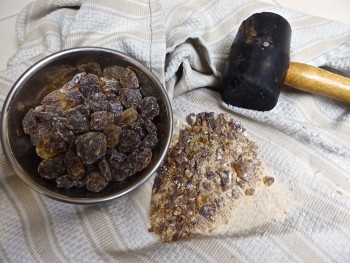





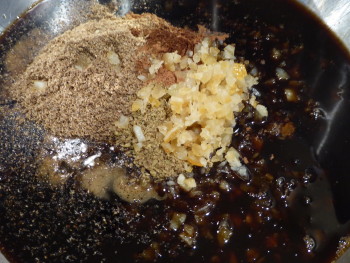
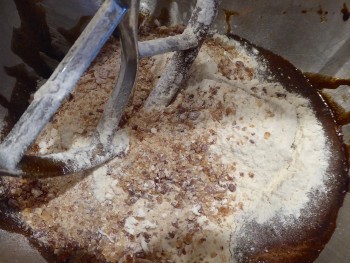
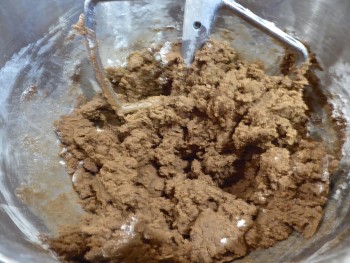

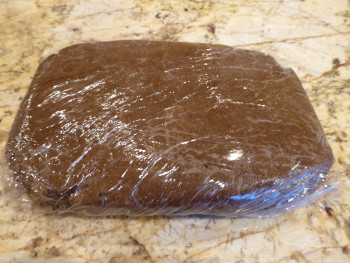
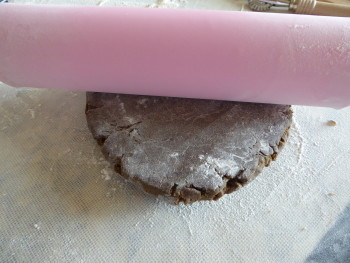

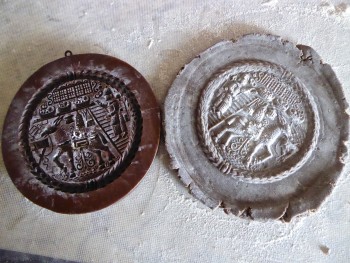
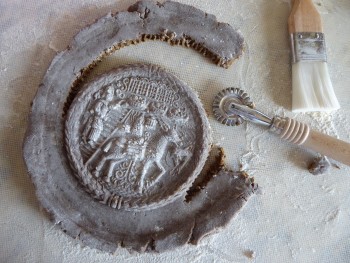

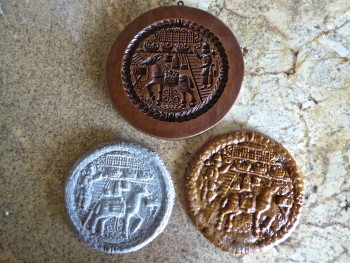


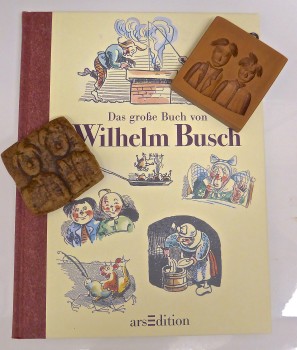
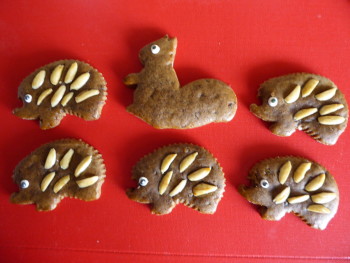





Thanks for posting this recipe. My son and I visited Aachen on a day trip during a trip to Germany last spring. We fell in love with the printen at Nobis Bakery (actually, we fell in love with the whole scene in Aachen — a beautiful Sunday afternoon, trees in bloom, sitting in the square next to the Cathedral, people watching and listening to a band playing — while dipping our printen in Cafe mit Milch). Anyway, I looked at a lot of recipes online but yours was the only one with pictures and step-by-step directions. I had to use dark corn syrup instead of sugar beet syrup; the only other thing I could find was pomegranate molasses and I didn’t think that would be quite right. Nor could I find candied orange peel, but I found ground orange peel, so used that instead and added it with the spices. I also made a glaze of confectioners’ sugar, milk, and a splash of orange juice instead of the syrup glaze, since I used the last of my dark corn syrup in the dough. When I was ready to bake, I cut them into rectangles the way I remember them from Nobis. Mine did not turn out as dark or chewy as those at Nobis, but the flavor immediately evoked that afternoon in Aachen. My son is going back to Germany in June and I’m going to ask him to bring me some Zuckerrüben Sirup for next years’ printen.
Thank you for sharing your recipe. I made these 2 years ago but I think I baked them too long in the oven causing them to be very hard. I plan to try again this year. I have a question – is it beneficial/required to rest the dough for the 1-2 days or is that just a make ahead option? Thanks again.
Should be OK just resting overnight. Yes, over-baking turns them into teeth-breaking tiles!
Thanks for sharing an interesting cookie recipe–no butter and no eggs! Will try.